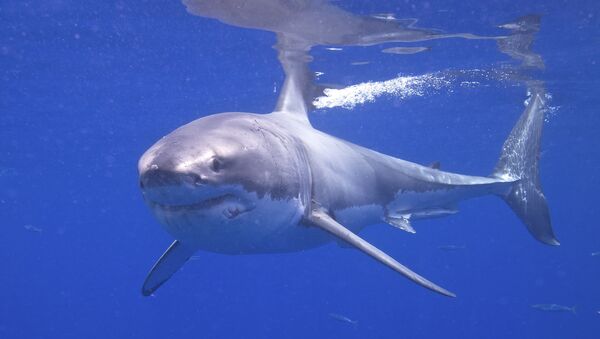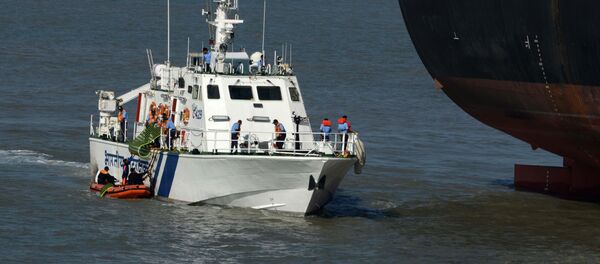Ocearch, an organization that helps scientists collect oceanographic data, is currently tracking a 15-foot, 2,137-pound white shark named Luna and a smaller, 12-foot white shark named Caroline near South Carolina. The two female sharks are among the biggest the organization has ever tracked using its global tracker, Ocearch said in a Facebook post on May 9.
The organization began tracking Luna last October, when she was near the Canadian shoreline. She moved to Florida, along the Gulf Stream, before turning north. Luna is currently swimming 80 to 100 miles southeast of Charleston, South Carolina, in an area known as the Charleston Bump. Caroline is currently near Edisto Beach, South Carolina. On Monday, Caroline pinged off the coast of Georgia, the organization confirmed in a Twitter post.
A "ping" takes place when a tagged shark's dorsal fin "breaks the surface of the water," sending a signal to a satellite, Ocearch told the Pensacola News Journal.
On May 11, Ocearch said a third shark, Katharine, was spotted off the coast of Charleston: "Just when we thought… that the battery on white shark Katharine's tracker had run out, she surprises us by pinging in last night way off the coast of Charleston, SC," an Ocearch Facebook post states.
The organization also received a recent tracker ping from a 10-foot white shark named Miss May off Daytona Beach, Florida. According to researchers at OCEARCH, the sharks are most likely feeding near waters in the coastal Gulf Stream.
Researchers are currently tracking eight white sharks in North and South Carolina. Four of them are located in the Outer Banks, barrier islands off the coast of the North Carolina that separate the Atlantic Ocean from the mainland.
While the Charleston Bump is a deepwater rocky ocean bottom feature which rises from the Blake Plateau, Edisto Beach and Daytona Beach are popular beach destinations.
The migratory patterns of great white sharks have always been interesting to researchers trying to understand their movements. A study published earlier this month in the PLOS One journal found that juvenile white sharks changed their distribution depending on sea surface temperatures.


